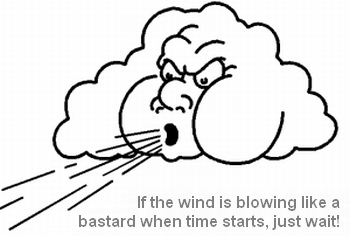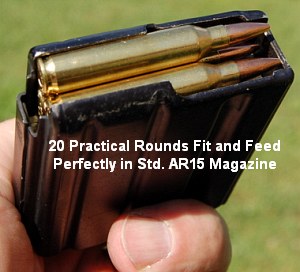October 14th, 2022Avoid having a ‘Train wreck’ at the 2022 F-Class NationalsThe NRA F-Class National Championships in 2022 begin this weekend at the Ben Avery range, Phoenix, Arizona. Practice will be held on Saturday, October 15, and the Mid-Range F-Class Nationals will begin this Sunday, October 16. The 1000-yard Long Range match begins on October 20th. Bryan Litz, a former F-TR National Mid-Range Champion and Long Range Champion talks about “Train Wrecks” in this article. These are the major disasters (such equipment failures) which can endanger a match. Bryan demonstrates the “train wrecks” that can befall competitors and explains how to avoid them. Urban Dictionary “Train Wreck Definition: “A total @#$&!” Disaster… The kind that makes your head shake. “Train Wrecks and How to Avoid Them”
Bryan Litz, Applied Ballistics LLC. Success in long-range competition is dependent on many factors. Competitors are detail-oriented and focus on the little things that can give them an edge. It’s not uncommon for shooters to lose sight of the bigger picture, missing the forest for all the trees. Consistency is a key principle of successful shooting. The tournament champion is the shooter who has the best average performance over many days, even though they may not win a single match. You can win tournaments even if you don’t have a stellar performance. However, you can’t win tournaments if your performance is a train wreck. Shooters of different skill levels and types can define train wrecks in different ways. There are many types of train wrecks. They can be anything from a miss to a 3/4-MOA shift of wind zero. Cross-Firing. Cross-Firing is the fastest and most common way of destroying your score (and any hope of winning a tournament). Cross-fire is a simple way to defeat your score. However, if you are smart, you can stack the odds in favor of your shot. Sling shooters should establish their Natural Point of Aim (NPA), and ensure that it doesn’t shift in your fire. If you do this correctly, you will always return to your target naturally without checking each time. This is something you should be doing anyway, but it’s a good incentive to monitor this fundamental. Pay attention to the rifle’s recoil and where the crosshairs settle in F-Class shooting. If the crosshairs settle to the right, adjust your bipod, hold, and/or make sure you move back every shot. Your scope should also be considered. The scope’s field view can be obscured by super-high magnification. Cross-firing can be a real risk. Equipment Failure. Equipment Failure. There are many equipment failures that you might encounter at a match. These could include loose sight fasteners to broken bipods to high-round count barrels that suddenly “go south”, just to name a few. Failures can occur in mechanical components. It is important to identify the critical failure points, monitor wear and keep spares on hand. A little prevention can save a lot of train wrecks. If you enjoy running hot loads, think about whether the extra 20 fps is worth blowing up 10 points, sticking a bolt, or worse, causing injury to someone else. [Editor’s note: The 2016 F-Class Nationals will use electronic targets, so traditional pit duties won’t apply. The following advice applies to matches with conventional targets. 3. Scoring/Pit Malfunction. While it is not directly related to your shooting technique but it is worth doing things to ensure you get fair treatment from your pit puller and scorer. Meet the other targets so they can get to know the shooter. It’s best to not tell Obama jokes if you find out that your scorer is a Democrat before you go for record. It may not be a good idea to shoot fast if your pit puller is old. This could lead to a missed shot (by the pit worker) or even having to call for a mark. A slowing down between shots can prevent a 5-minute delay or a missed shot. Wind issues. Many trains are stalled by unpredictable winds. There are many ways to avoid wind-related problems. Here’s one tip: How to get the edge off of a worst case scenario. You don’t need to shout “Commence fire!” You don’t have to wait if the wind blows like a bastard when you start your time. Your string will be lit in a long-range slow fire for 30 minutes. It might take you 10 minutes with average pit service, but less in F-Class. You have three times more time than you actually need. Let everyone else take the lead and find a window or windows of opportunity that aren’t so dire. This is a risk. Things could get worse if we wait. Here is where judgment comes into play. You have choices for managing time. Keep an eye on the clock. Saving rounds in slow-fire matches is costly and embarrassing. Take care of your physical health. Most shooters travel for matches and break their usual eating habits, sleep patterns, and alcohol consumption. This can have a negative impact on your body, your ability to shoot well and your ability to think clearly. If you are used to working indoors and eating salads in air-conditioned breakrooms, and you have to travel to a week-long rifle contest, which is hot and humid in 90-degree heat, with little sleep, and keep you on your feet all day, you might consider daily train wrecks. You can arrive the night before to get a good night’s rest if the match is four hours away. Keep your eyes on the important things. It is important to keep your eyes on the big picture. You must keep the big picture in mind. All the little improvements can’t make up one big train wreck!Similar posts:Tags to:Ben Avery, Bryan Litz F-Class, F–Open, F–TR, Mental Game NRA F–Class Nationals Reloading, Train Wrecks Wind Reading

BargainFinder 500: AccurateShooter’s Talks of the Week
As an Amazon Associate, this site earns a commission from Amazon sales. April 20th, 2025 BargainFinder 500: AccurateShooter’s Deals of the Week This week
















